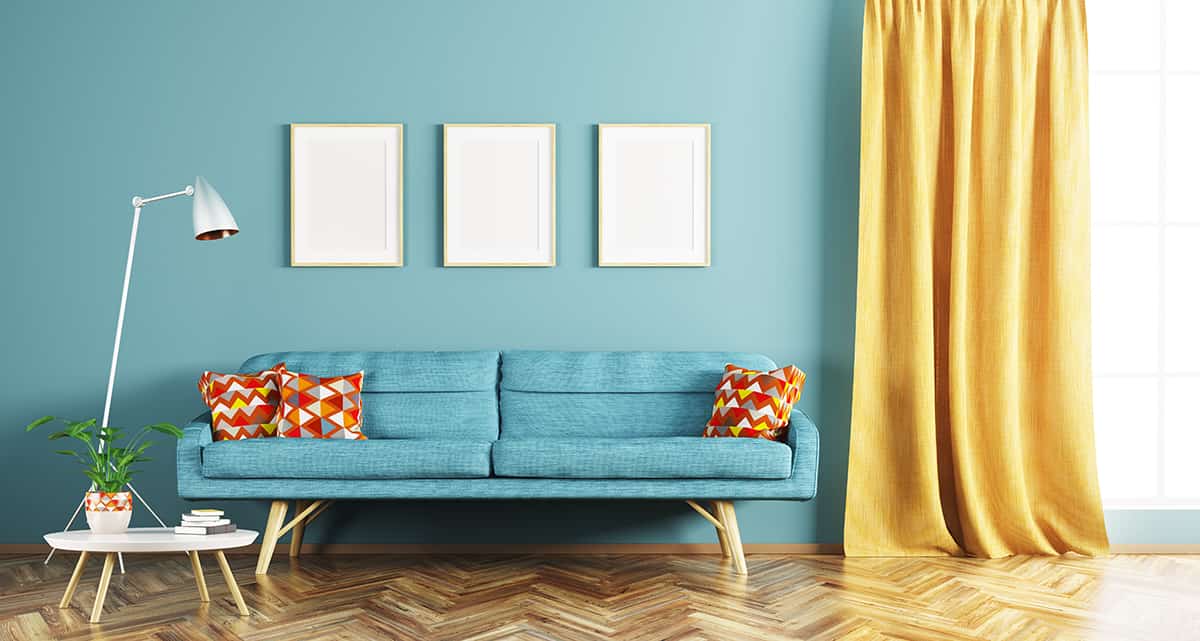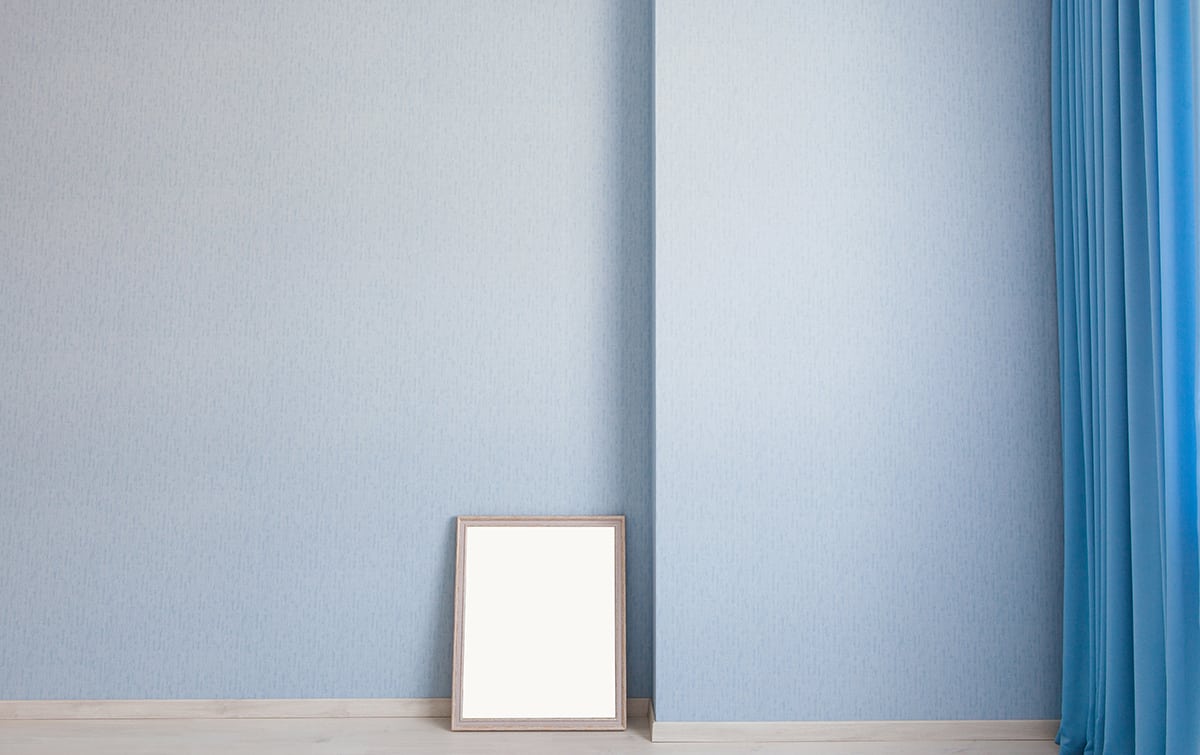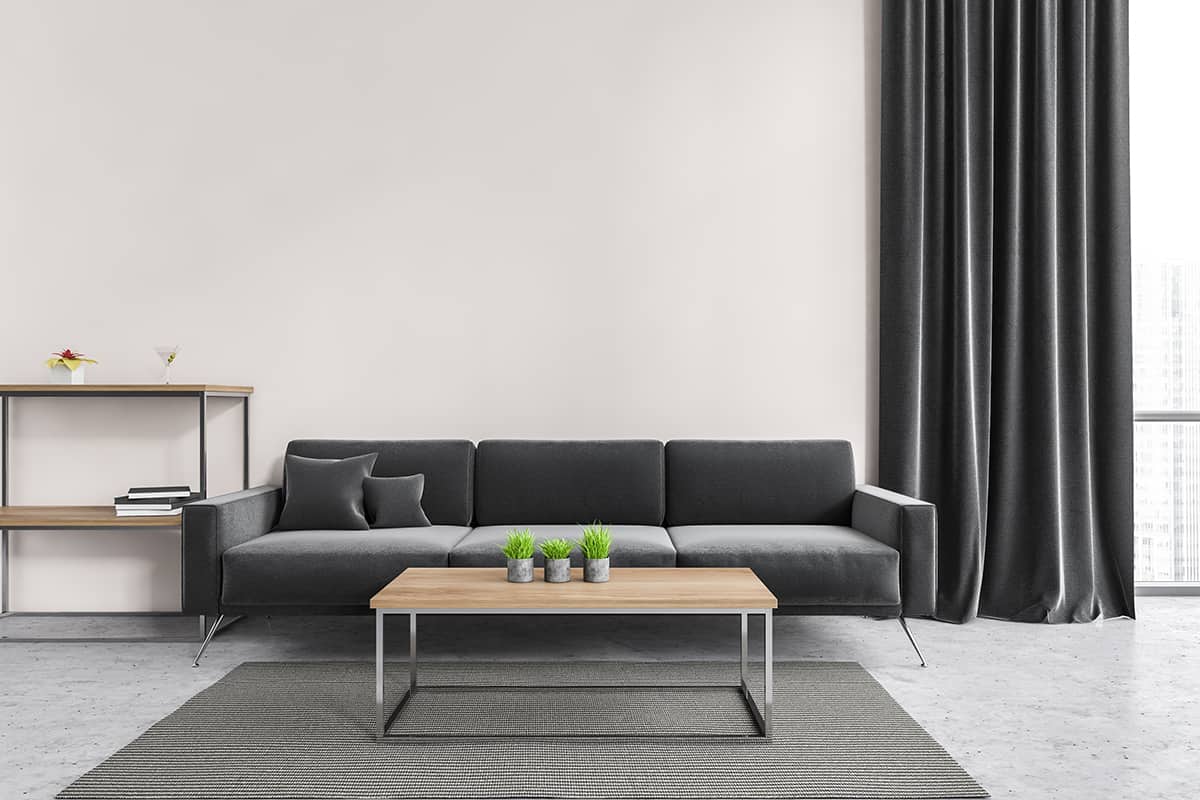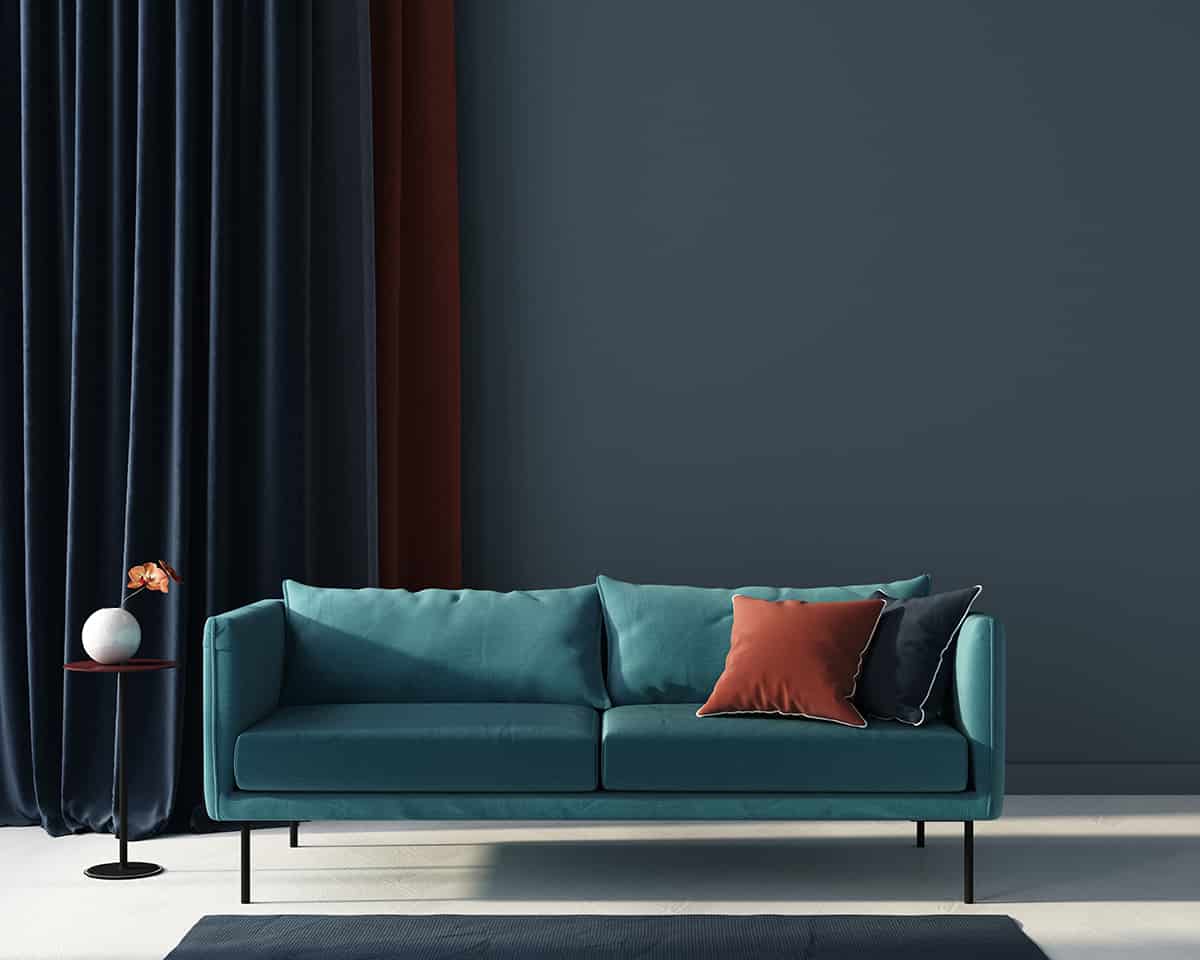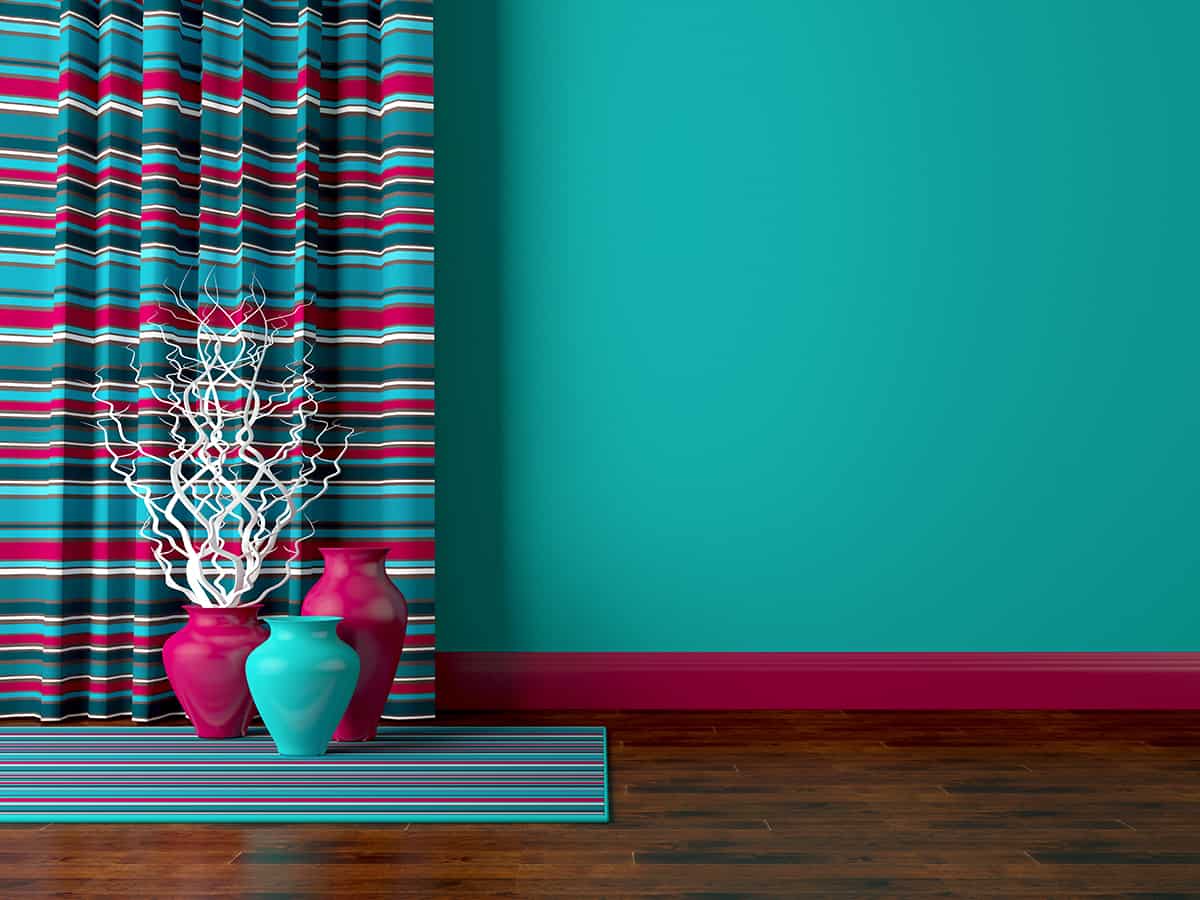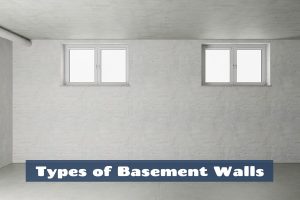Curtains serve the practical purpose of blocking out light when they are closed, as well as adding an additional layer of insulation in front of windows. From a design perspective, they also frame the windows and add a soft touch to a room that makes it feel more comfortable and welcoming.
The color of curtains you choose can also play a big role in both the functionality of the curtains and the type of style they help to create in a room. If you have already decorated your space, then you should make sure any new curtains work well with your wall color, especially as they will be displayed side by side.
Here we look at whether curtains should be lighter or darker than walls and how to achieve the best look you want from different shades of curtains.
Should Curtains be the Same Color as Walls?
If you’re wondering whether the color of your curtains should exactly match the color of your walls, then the answer to this question in almost all situations is simply ‘no.’ This is because if your curtains and walls are the same color, then they will blend into each other and can make the room look very flat and two-dimensional, which can also make it feel smaller and duller.
The exception to this is if you have walls that are painted white. White curtains in a white room can look very classy and actually have the effect of making the room feel bigger because the white reflects the light and creates an open and airy effect.
For all other colors, your curtains can be the same color as the walls as long as you pick a slightly different shade. For example, if your walls are a medium blue, then your curtains could be a dark blue or light blue. This will help to create a more tonal effect and ensure there is a visual distinction between the walls and the curtains.
That being said, curtains absolutely do not have to be the same color as the walls, and this is down to personal taste and preference. You could instead choose a contrasting color for your curtains, for example, dark gray curtains in a white room.
This rule not only applies to curtains but can be used for crown molding as well.
Should Curtains Contrast Walls?
Curtains can contrast walls if you wish, but this isn’t a necessity for achieving a stylish look. If you have a very large picture window that you want to emphasize, or beautiful French doors leading out to a balcony or terrace, then you could use contrasting curtains to draw attention to these features.
Curtains that stand out from the walls will draw the focus to the windows and highlight this area of the room. To achieve a contrast between the walls and the curtains, you can choose opposite shades of the same color, for example, very pale gray walls and dark slate gray curtains, or you can choose two contrasting colors.
To find contrasting colors, you should look at colors that face opposite each other on the color wheel. Examples of contrasting pairs include purple and yellow, red and green, and orange and blue. Black and white also make a very strong contrasting look and are great for creating a monochromatic theme.
We explore lots of contrasting options between walls and curtains colors in our articles ‘ 11 Elegant Curtain Colors for Cream Walls‘ , ‘What Color Curtains Go With Red Walls: 5 Brilliant Ideas ‘.
Should Curtains be Lighter or Darker than Walls?
As we have established, curtains look best when they are a different shade to the walls; however, the choice of whether to go lighter or darker than the walls is completely personal.
Many people prefer to choose darker curtains, especially in bedrooms, because these may be better at blocking out light and aiding in a better night’s sleep. However, you can also buy light-colored curtains with blackout properties, or you could get a blind to use behind the curtains as an alternative method for blocking out light.
If you want to create a tonal look that is very trendy right now, you should aim to choose curtains that are only one shade lighter or darker than your walls. This will help to achieve a layered style that adds depth and elegance to a space.
The atmosphere you want to create in a room can help you decide whether to choose curtains that are lighter or darker than the walls, especially if your wall color is of a medium shade.
Generally, you can expect that if you choose curtains in a lighter shade than the walls, then this will encourage a bright and breezy vibe in the room. This can be good in small rooms or those which lack natural light to make the room feel more open. It works well for rooms that are predominantly used during the day, such as living rooms, offices, and kitchens.
To create a more snug, intimate, or cozy feel, then curtains that are a shade darker than the walls will be a good option. This is particularly effective in rooms that receive more use in the evening, such as bedrooms, dining rooms, and cinema rooms.
Should Curtains Be Patterned?
Patterned curtains can add personality and interest to a room, especially if your walls are otherwise quite bare. Using a patterned fabric is also a great way to include several colors in your curtains, allowing you to use shades that are both darker and lighter than your walls simultaneously.
If you can’t decide on a color for your curtains, then choose a set of patterned drapes which feature the same color as your walls in various shades or with the addition of other colors that match your decor theme.
For example, if your walls are a medium olive green, you could choose patterned curtains which feature a very pale olive green as well as a dark, almost brown olive green, along with a neutral shade such as beige or a contrasting red.
You can then pick out colors that are within the curtains and select accessories such as cushions and candles with the same accent shades to tie the curtains into the room.
